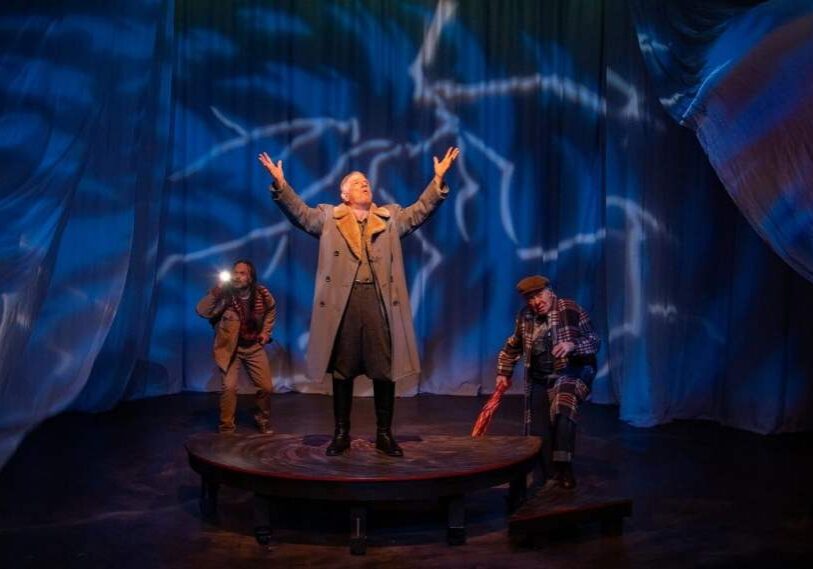Civil War Hero Judson W. Bishop, Instrumental in Building Fillmore County’s Future
From leading Minnesotans into battle to surveying frontier roads, Veterans Day reminds us of Bishop’s legacy

FILLMORE COUNTY – Each Veterans Day, as flags ripple above quiet cemeteries and the wind sweeps across the Root River Valley, Fillmore County remembers the many men and women who answered their country’s call to military service. Their stories of courage, endurance and the lives they built afterward continue to shape the communities we know today.

Portrait of Judson W. Bishop from The Story of a Regiment (St. Paul, 1890). (Public domain, digitized via Archive.org)
Among them was Judson Wade Bishop, a man whose path from Chatfield engineer to Union officer reflects not only his own dedication, but the character of the county itself.
Bishop’s story threads through nearly every part of Fillmore County’s early identity – its population, its roads and railways, its early newspaper and even its call to arms during the Civil War. He helped draw immigrant settlers here, rallied its citizens to defend the Union and returned to build the infrastructure that would guide the county into the future.
Today, Bishop’s name is carved quietly into history, but the county he helped shape is still his monument.
From New York to the Minnesota frontier
Born in Suffolk, New York, in 1831, Bishop came west as a young man when Minnesota was still a frontier. By the mid-1850s he had settled in Chatfield, a new settlement that was just beginning to find its footing.
Trained as a surveyor and civil engineer, Bishop helped map the roads and parcels that would define Fillmore County’s earliest communities. His work was practical but visionary and he was literally drawing the outlines of a county’s future.
Promoting a promising land
In 1858, Bishop published a small pamphlet called The History of Fillmore County, which was distributed across the eastern United States and even in Europe.

Cover of J. W. Bishop’s 1858 pamphlet, “The History of Fillmore County.” (Reproduction courtesy of the Fillmore County Historical Society)
This pamphlet painted the region in glowing terms of fertile soil with thriving communities and opportunity for settlers and helped draw new families to the area. Those with deep Fillmore County roots today might just owe their Minnesota beginnings to Bishop’s persuasive pen.
Not content to stop there, Bishop turned to journalism. From 1859 to 1861, he owned and edited The Chatfield Democrat, one of the county’s earliest newspapers. His editorials promoted civic growth, education and enterprise.
These same values would later guide Bishop in public service. In print, as in life, Bishop believed in progress rooted in community.
When the bugle sounded
Then came April 1861, and with it, the thunder of the Civil War.
When the telegraph carried word of Fort Sumter’s fall, the patriotic energy of Fillmore County surged. Many of its young men raced to enlist with the First Minnesota Infantry and the regiment filled almost instantly.
Bishop, already drilling a local militia known as the Chatfield Guards, stepped forward to lead. His company became Company A of the Second Minnesota Volunteer Infantry, one of the most respected regiments in the Union Army.
In his later memoir, The Story of a Regiment (1890), Bishop recalled the day his men left town: the crowd lining the road, the wave of hands and flags as they “marched up the winding hillside road to the table land east of Chatfield.” It’s a scene easy to imagine even now – neighbors gathered at the edge of town, watching sons and brothers disappear over the ridge.
The Second Minnesota’s famous charge
The Second Minnesota soon earned a reputation for discipline and courage. The regiment fought at Mill Springs, Chickamauga, Atlanta and most famously at Missionary Ridge, where its spontaneous uphill charge helped secure a major Union victory.

The Haven Wall in Chatfield holds a stone commemorating the Minnesota Seconds’ march to war. (Photo by Julie Fryer)
The Second Minnesota’s bravery became part of Civil War legend and is seen as the embodiment of Minnesota patriotism. Bishop served through the entire conflict, rising to Lieutenant Colonel and later receiving the honorary rank of Brigadier General for “gallant and soldierly conduct.”
Yet when the war ended, Bishop’s focus returned to building rather than fighting.
Engineer of progress
Back home in Minnesota, Bishop resumed his engineering career and helped construct the Southern Minnesota Railroad, linking Fillmore County’s towns to the broader world.
In 1875, he became Minnesota’s State Railroad Commissioner, shaping infrastructure policy at a time when railroads meant progress. Colleagues described him as methodical, fair and civic-minded, qualities that had guided him since his Chatfield days.
Through all these roles – engineer, author, editor and soldier – Bishop’s life was defined by service. He had a way of seeing potential in both people and places, and then finding practical means to bring it to life.
A legacy still visible
Today, his influence endures in ways both grand and tangible. The Fillmore County History Center & Museum in Fountain proudly displays Bishop’s original Civil War sword, its brass hilt gleaming beneath the glass, a silent reminder of the man who once carried it through battle.
The Chatfield Historical Society also preserves his story, along with records of the Second Minnesota and the “Chatfield Guards” who followed him from this valley to victory.
Bishop died in 1917, at age 86, and was laid to rest with full military honors at Oakland Cemetery in St. Paul. His life from engineer to newspaperman, soldier to statesman tells the story of a man who never stopped working to improve the world around him.
A lasting tribute
As we celebrate Veterans Day each November 11, it feels right to remember Bishop not only as a general but as a builder. As a man who turned vision into community, who gave both his labor and his life’s work to Fillmore County.
From the pamphlet that drew settlers here, to the railroad that connected its towns; from the newspaper that voiced its hopes, to the regiment that defended its freedom, Bishop’s hand is everywhere in the county’s development.
He was, in every sense, a man who built a county’s future and left behind a legacy still worth saluting.





